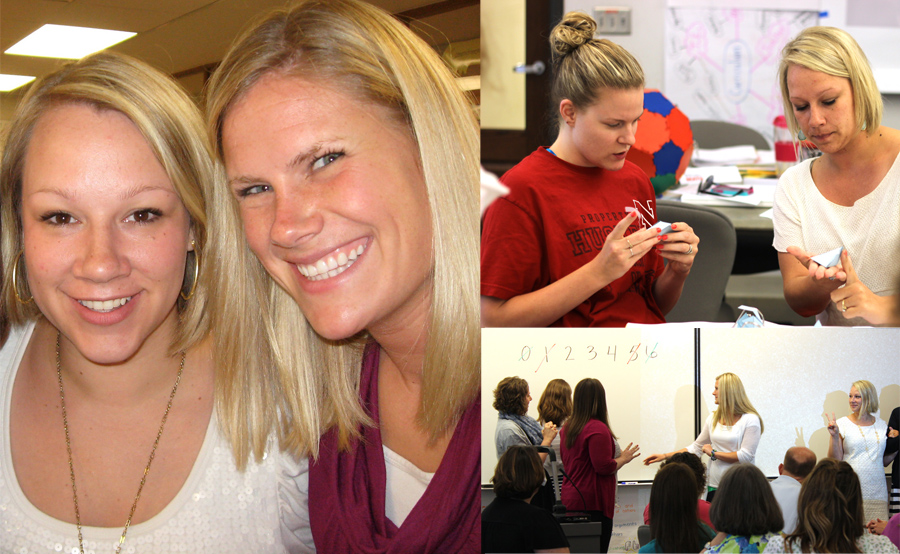
Primarily Math teachers Tracy Clements and Jennifer Woelber of Cohort 4 Lincoln were concerned about what they were hearing from parents. Having recently implemented changes in their math curriculum, many of their students’ parents conveyed a desire to help their children with math homework, but felt unequipped to do so. With the focus of their math instruction shifting from the procedural to the conceptual, parents felt they could not help their students at home in a way that supported the learning taking place in the classroom.
"Some parents expressed frustration because they were not taught in the same way or do not know the variety of strategies that we practice in the classroom. They want to help their children, but understand the problems that occur when they try to teach their own procedures," Clements said.
Clements decided to do something about it. Since she was working on a family project for the Primarily Math course "Helping Young Children Become Mathematical Thinkers," she had some conversations with Woelber, her teammate and fellow Primarily Math teacher, and the two of them came up with the idea to record videos of their students demonstrating the strategies used in their classrooms and post them on their class websites. While initial plans for project were to record themselves modeling strategies, Clements and Woelber quickly decided to have students do it instead.
"Our curriculum encourages students to try multiple strategies to solve problems, so we have videos of several students completing the same problem in different ways," Woelber said. "It gives the students opportunities to explain their thinking visually and verbally."
Clements and Woelber felt like they were taking a big risk by working on the project. "While I feel confident in my ability to teach students, inviting parents to regularly see how we do things in the classroom also invites more feedback, both positive and negative," Clements said.
Woelber agreed. Even though special permission slips were sent home explaining the project, "we run the risk of parents being concerned that their children are not featured enough in the videos, or are featured too much."
The first videos posted featured students demonstrating strategies for some of the more challenging objectives that had been studied earlier in the year. The response to the videos from parents was very positive, and soon parents indicated they also wanted to see videos featuring current objectives. As word got out, colleagues, principals and curriculum directors were made aware of the videos, resulting in principals from other schools sharing the idea with their staff.
"Overall, this project did a lot for the students, parents and myself as a teacher," Woelber said. "I was very excited about how the project turned out and am continuing to add to it."
She also was pleased by some unexpected benefits of the website: "My students would frequent my website because of the videos and stumble upon other information as well!"
For other who might be interested in a similar project, Clements offers this advice, "Start with objectives that are challenging for a lot of students. Keep the videos short. Have students do the work first, then record them explaining their strategies and what they were thinking while they were working. Have kids practice accessing the website from school so they can help their parents find it at home."
Clements and Woelber also believe featuring students in the videos was the right choice. "The students love being part of the videos and work hard to be selected as a video star. Also, we knew that parents would like seeing their children in action more than seeing us."
Check out the videos for yourself. They are available at: http://wp.lps.org/tclemen/curriculum/math/math-videos.